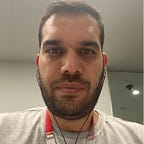☁ Health Industry Solution for Huawei Cloud
Introduction
Hello all, I’m going to explain how we can use and how we can approach Huawei Cloud in the Health Industry.
Digital transformation has become a key enabler in the rapidly evolving healthcare industry, helping to improve patient care, streamline operations, and strengthen entire systems. One of the companies leading this digital revolution is Huawei, a multinational technology giant known for its innovative solutions. With a broad portfolio of services designed to solve complex problems faced by the healthcare industry, Huawei’s Cloud Healthcare solution is a revolutionary project with the potential to transform completely transform the healthcare environment completely.
We will explore the complex world of Huawei Cloud Health Industry solutions in this article. We’ll look at how this cutting-edge technology works, from the fundamentals to its revolutionary effects on patients, healthcare professionals, and the industry as a whole.
What are we actually solving with Artificial Intelligence?
For example below, illustrations cover a variety of medical diseases where artificial intelligence plays an important role in medical imaging. Healthcare workers can benefit from AI support for processes of diagnosis, monitoring, and treatment.
- Breast Cancer Detection: AI can analyze mammograms and other breast imaging to detect and classify potential tumors or abnormalities, aiding in early breast cancer diagnosis.
- Bone Fracture Identification: AI algorithms can assist in identifying bone fractures in X-rays and CT scans, ensuring rapid and accurate diagnosis.
- Pulmonary Disease Detection: AI can analyze chest X-rays and CT scans to identify signs of pulmonary diseases, including pneumonia, tuberculosis, and lung cancer.
- Brain Tumor Detection: AI-powered medical imaging can help identify brain tumors, their size, and their location in MRI and CT scans, facilitating timely treatment decisions.
- Cardiac Imaging Analysis: AI assists in analyzing cardiac images, helping to detect heart diseases, assess cardiac function, and plan interventions like stent placements or heart surgeries.
- Liver and Kidney Disease Assessment: AI algorithms can evaluate liver and kidney health through the analysis of ultrasound, CT, or MRI scans, aiding in the early detection of diseases and monitoring their progression.
- Ophthalmology: AI is used in retinal imaging to detect diabetic retinopathy and other eye conditions, enabling early intervention to prevent vision loss.
- Dental Radiography: AI helps in diagnosing dental conditions like cavities, gum diseases, and jaw abnormalities through dental X-rays.
- Spinal Condition Assessment: AI can analyze spinal images to identify conditions like herniated discs, scoliosis, and other spinal abnormalities.
- Skin Cancer Screening: AI assists in the early detection of skin cancer by analyzing dermatological images for suspicious moles or lesions.
Intelligent, digital medical imaging cloud: supports online image reading, remote storage, collaborative diagnosis, and scientific research and education
What happened in a real scenario?
Access anywhere, anytime, benefiting hospitals, doctors and patients
Full-lifecycle and hierarchical management of medical images for patients
- Establishment of regional imaging data centers
- Sharing and accessing diagnostic information
- Mobile reading, remote reading
- Monitoring for disease analysis
- Centralized data storage management
- Online medical image data analysis
What are the diagnosis details?
When it comes to AI-based telemedicine, advanced deep neural networks are essential to changing the face of healthcare. These networks act as the central computational engine, receiving as input a variety of patient data, such as medical history, symptoms, and diagnostic images, and using sophisticated machine learning algorithms to analyze and interpret the data to produce meaningful and actionable outputs. The data that is typically entered into these networks includes lab results, electronic health records, patient-provided information, and vital signs, all of which are securely transmitted to the telemedicine platform. Deep neural networks are particularly good at pattern recognition and feature extraction, which enables them to identify subtleties and correlations in the data that might be confusing to humans.
Huawei Cloud and AI-assisted diagnosis helps much faster than manual operation
Normal progress takes time (manual progress) but AI will help diagnose the problem and much shorter time to whole end-to-end progress.
On below;
AI-helped progress takes approximately ~4 minutes 40 seconds
Manual progress takes approximately ~16 minutes
Critical Point: Architectural set-up
- Cloud resources enable the storage of large amounts of medical imaging data without the need for resource planning or system growth.
- A variety of storage options to reduce storage costs.
- Doctors can read and diagnose films using decentralized diagnosis across hospitals and virtual consultations from anywhere and anytime.
- Regional cloud platform resource aggregation reduces costs and realizes regional resource sharing.
Conclusion
This article shows the basic concept of the architecture for the health industry.
If you have any thoughts or suggestions please feel free to comment or if you want, you can reach me at guvezhakan@gmail.com, I will try to get back to you as soon as I can.
You can reach me through LinkedIn too.
Hit the clap button 👏👏👏 or share it ✍ if you like the post.
